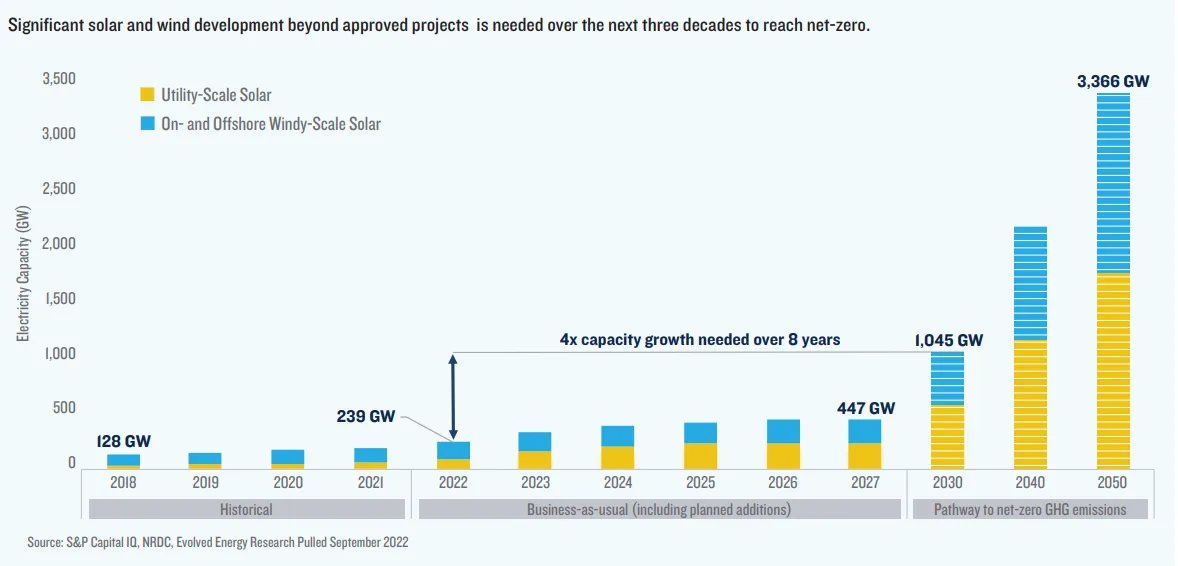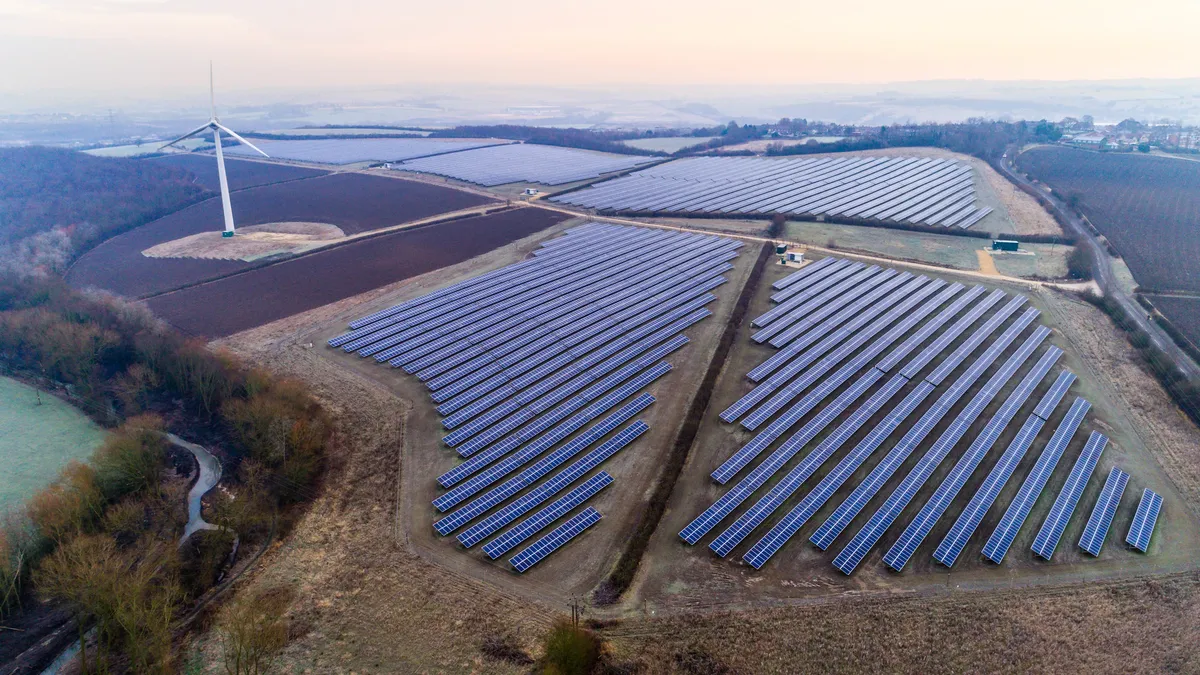In order to spur renewable energy and transmission line development, the U.S. should adopt a planning and permitting model that focuses on communities affected by the infrastructure, the Natural Resources Defense Council said in a report released Wednesday.
“Projects should provide economic opportunity and conservation measures that will leave these communities stronger than they were before the infrastructure was built,” the environmental group said in the report.
Failing to rapidly accelerate renewable energy and transmission development will leave the Inflation Reduction Act’s potential unmet, according to NRDC. The United States needs to build about 564 GW of renewable electricity and storage by 2035 to meet the IRA’s potential, the group said.
Further, to have economy-wide net-zero carbon dioxide emissions by 2050 requires an immediate, massive ramp up of renewable energy development, according to NRDC. The group’s modeling of net-zero pathways requires 60 GW of solar and 40 GW of wind to be built per year for the rest of this decade, up from the combined 25 GW of wind and solar that came online in 2022.

At the same time, the U.S. transmission system needs to roughly quadruple to meet the mid-century emissions target, NRDC estimated.
Changes made to the environmental review process as part of the debt ceiling deal earlier this year failed to reduce bottlenecks and barriers in energy infrastructure planning and permitting, NRDC warned. “Moreover, there is a growing opposition to these projects and to meaningful permitting reform,” the group said.
NRDC’s report focused on four key obstacles to energy infrastructure development:
- Siloed permitting processes for large transmission projects;
- Local opposition to large renewable energy and transmission projects;
- A lack of federal agency resources for permitting and environmental reviews; and
- A failure to avoid affecting sensitive wildlife and habitat.
To tackle those issues, NRDC urged the Department of Energy and the Federal Energy Regulatory Commission to quickly designate new “national interest” transmission corridors, where projects are eligible for federal investment and permitting benefits. DOE has issued a draft “transmission needs” study that may be used to identify transmission corridors and FERC has proposed rules revising its backstop siting authority to approve lines in national interest corridors if states don’t.
To ease opposition to energy projects, states should adopt siting and permitting laws that expand community engagement and limit the ability of localities to ban wind and solar projects, NRDC said.
In addition, host communities should receive direct benefits from clean energy projects, the group said.
NRDC recommended that agencies and grid planners adopt “smart from the start” planning so that projects avoid harming wildlife habitat as much as possible. Hallmarks of the process include early stakeholder discussions and landscape-level planning, according to the report.
Grid planners should use existing transmission rights-of-way when possible, fully consider non-wires alternatives like advanced conductors, and select power line routes that avoid communities and important resources as much as possible, NRDC said.
On the issue of increasing federal permitting capacity, the Biden administration should use IRA and bipartisan infrastructure law funds to speed up “smart” renewable energy and transmission planning and permitting, according to the group.















